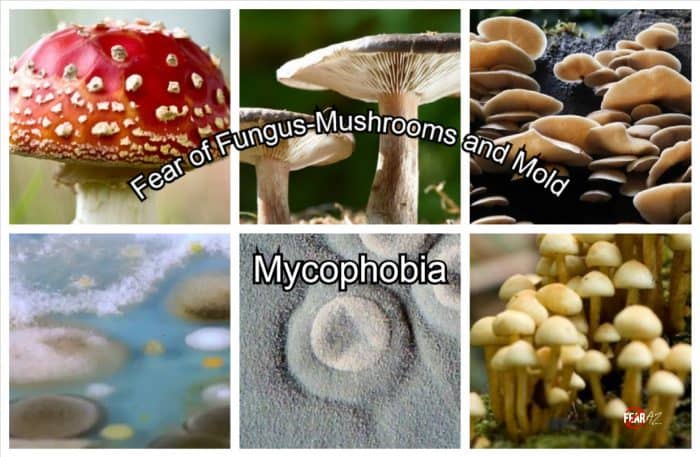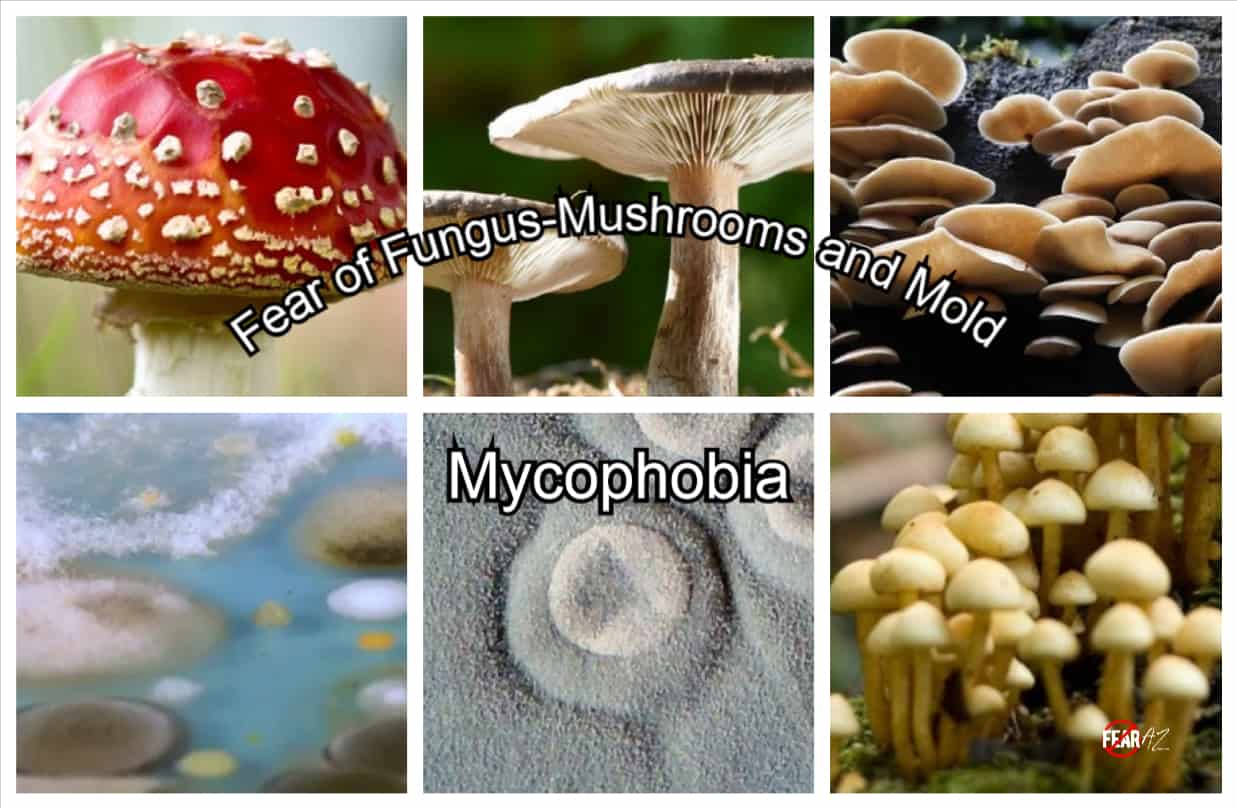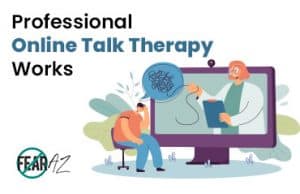Share This Article
Fungus, Mushrooms and Mold. Oh My!
Do you feel a choking sensation at the sight of the gross-looking, grayish-blue fungus on your bread or weeks-old vegetables?
Does the sight of fungi or mold draw sweat from your pores?
What about mushroom soup or that plate of mushroom-topped noodles? And did we mention the salad topped with sautéed mushrooms?
Does all this talk of mushrooms make you nauseous or a bit green around the gills?
If the fear of fungi and mushrooms is disrupting your life, you may be suffering from mycophobia, or the fear of mold, fungus, and mushrooms. Mycophobia is considered a full-fledged phobia and not just a general dislike of fungi.
If you’ve discovered yourself avoiding life to escape encounters with fungi, read on. We’ll explore mycophobia causes, symptoms, and treatment. A little education can go a long way towards helping you overcome your fear.

What Is Mycophobia?
Mycophobia is the extreme fear of fungi of all kinds, including mold. The term mycophobia comes from the Greek words mycos, meaning “fungus,” and phobos, which means “to dread or to fear.”
This phobia, or irrational fear, erupts because an individual is terrified at the thought of becoming ill from the consumption of fungi of any kind. Or even from touching it. The fear extends to all types of fungi from toadstools to mold to mushrooms.
A Phobia of Fear or Disgust?
A mycophobic person will avoid damp places like unused attics, bathrooms, and swimming pools. They know moist and dark places create the right environment for fungi and mold to grow. They may avoid eating out, walking in the woods, or may obsessively empty their refrigerator of products which may grow mold.
Those with mycophobia associate all fungi with something dirty and infectious, causing illness and disease. But the truth is, certain molds and fungi are actually useful to us and are definitely beneficial to the environment.
Causes of Mycophobia
There are many reasons why this fear may have become a full-blown phobia.
As children we were cautioned against eating fungi or mold. We may have learned that mold spores can invade the lungs or get into the eyes, causing illness. In some cases, one may have experienced or seen someone experience severe illness related to mold or fungi. Such memories plant the seeds of fear.
A genetic predisposition to phobia is also a possible cause. A genetic predisposition means that your parents might have a history of similar phobias, resulting in you acquiring the same.
Environment may also play a role. Those with mycophobia may have seen their parent’s fearful reaction when they came across mushrooms or mold. Friends or extended family members may have expressed a heightened fear of fungi.
People suffering from OCD may also exhibit symptoms of mycophobia. Both conditions are closely related in their causes and symptoms.
Another playing factor is the media. It feeds into this fear via news reports and films on the harmful effects of fungi and mold.
Symptoms of Mycophobia
The symptoms of mycophobia are similar to those of other phobias.
- sweating
- the feeling of lack of control
- bouts of crying
- a rise in body temperature
- increased heartbeat
- anxiety
- panic attacks
- shortness of breath
- irregular heartbeat
- rapid breathing
- dry mouth
- vomiting
- dizziness
- shivering
- inability to communicate
How Can You Deal with Mycophobia?
Once you are aware and educated about your phobia, you can move toward treating it. Like any other phobia, mycophobia has certain causes and symptoms. Identifying and treating them is possible.
Even if you don’t rid yourself of the phobia completely, you can learn to manage it. With the right treatment, you may be able to stop associating fear with a specific trigger. However, the first step begins with you acknowledging the fear and taking immediate and necessary action against it.
Self-Help
Learn more about your phobia and try to analyze the irrational aspects of your fear.
Practice yoga and meditation. It will help calm your mind and ease anxiety attacks. It will also help you gain better control over your mind and body, which will aid in your recovery and coping mechanisms.
Try talking to your friends and family who will listen without judgment. Sharing your fears will lessen the burden.
Similarly, you may also write your thoughts on a piece of paper. Later, read what you wrote. This tip will help you better understand your triggers and behavior, providing insight.
Professional Treatment
If self-help isn’t making a dent in your phobia, seek timely medical intervention with an experienced and certified professional. They will employ various psychological methods and therapies to help you get over the fear.
Since phobia can have several causes, there are no specifically designed mycophobia treatments. There is no mycophobia test either.
Nevertheless, there are still many different kinds of treatment targeted toward the causes. These can help significantly improve many of the symptoms of mycophobia. Some of these treatments are exposure therapy, cognitive-behavioral therapy (CBT), and psychiatric medications.
Exposure Therapy
One of the most common types of treatment is exposure therapy. In the case of mycophobia, the therapist may begin by exposing the patient to photographs of mushrooms.
Gradually, they will expose them to a real mushroom that they can observe and touch. Repeatedly exposing them to the source of the fear will desensitize the patient to their fear. In theory, the more someone gets exposed to something they fear, the less it will bother them in the long run.
Cognitive Behavioral Therapy (CBT)
CBT is another very common type of treatment that is frequently used to help people suffering from conditions like generalized anxiety disorder (GAD) and obsessive-compulsive disorder (OCD), among others. It may be effective in treating people suffering from phobias like mycophobia.
CBT works by having the therapist help the patient discover why they think, feel, and behave the way they do about a specific fear or concern.
Medication
Medication does not treat phobias, but they work to ease the accompanying symptoms such as anxiety and panic.
To Sum It Up
It is important to recognize that phobias, like any medical ailment, should be treated with timely intervention. If you know someone suffering from mycophobia or any other form of phobia, lend an ear. Offer them a helping hand and a safe space to express emotions.
If you suffer from mycophobia, take your therapies seriously and never miss a session. It might be bothersome in the beginning, however, you’ll be motivated once you see improvement. It’s absolutely possible to get back to living a normal, fun life with the right help and treatment.




